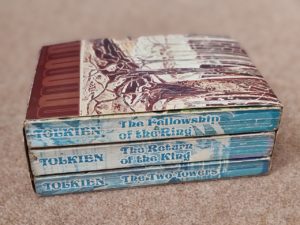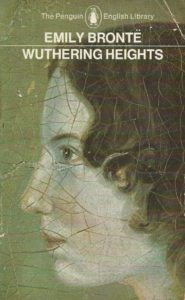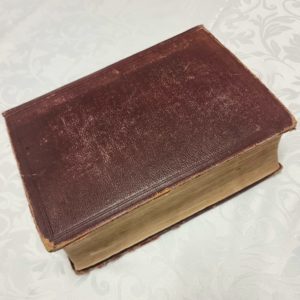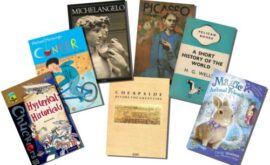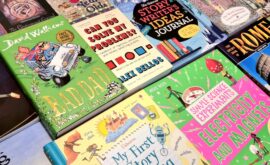Discovering Hidden Gems: A Guide to Identifying Valuable Vintage Books in Second-Hand Stores
There’s something undeniably charming about sifting through the shelves of a second-hand bookshop. The smell of old pages, the soft rustle of paper, and the thought that you might stumble upon a hidden treasure—all make it a uniquely delightful experience. But how do you know if that dusty tome you’re holding is more than just a lovely old book? Here’s a friendly guide to help you spot valuable vintage books when shopping second-hand.
1. Learn Which Authors and Titles Are Collectable
Certain authors and titles hold enduring appeal among collectors. First editions by literary greats like Jane Austen, Charles Dickens, or the Brontës are always in demand. Similarly, 20th-century classics such as George Orwell’s 1984 or J.R.R. Tolkien’s The Hobbit can be worth a pretty penny if you find the right edition.
Start by familiarising yourself with notable authors and iconic books. Even jotting down a quick list of titles to keep an eye out for can be incredibly helpful. If you’re just starting out, a little research beforehand will go a long way.
2. Look Out for First Editions
First editions are the holy grail for book collectors. These are the first printings of a book’s first release, and they’re often the most valuable. On the copyright page, look for terms like “First Edition” or a number line starting with “1.” Be aware that some publishers didn’t use these terms consistently, so it’s worth learning how specific publishers denoted their first editions.
A first edition of a beloved book—especially one in good condition—can be a fantastic find. For instance, a first edition of Harry Potter and the Philosopher’s Stone has been known to fetch thousands!
3. Condition is Key
The condition of a book has a massive impact on its value. A battered or heavily marked book is less desirable than one that’s been well cared for. When assessing a book, here’s what to check:
- The spine and binding: A tightly bound book is a good sign. Avoid books with loose pages or a cracked spine.
- The cover and dust jacket: A dust jacket can significantly increase the value of a book, especially if it’s in good condition. For older books, check for minimal fading or wear.
- The pages: Are the pages clean, without tears or excessive foxing (those brownish age spots)? While some ageing is natural, major damage can reduce value.
That said, don’t dismiss a slightly worn book entirely—it could still be valuable depending on its rarity.
4. Pay Attention to Publishers
Some publishers are associated with collectable books. For example, early works from Penguin Classics or the Oxford University Press are often of interest to collectors. Vintage editions from these publishers can have unique cover designs or high production quality, adding to their allure.
5. Watch for Author Signatures and Inscriptions
A book signed by its author can skyrocket in value. Look for signatures on the title page or inscriptions that suggest it was personalised by the author. However, be cautious of forgeries—if a signed book seems too good to be true, it might be worth verifying the signature through an expert or an online comparison.
6. Keep an Eye Out for Limited Editions
Some books were published in small print runs or as special editions. These limited editions can be highly sought after. They might feature unique illustrations, decorative bindings, or special forewords not included in standard editions. Check the copyright page for mentions of limited runs or numbered copies.
7. Check for Misprints or Rare Features
Books with errors or misprints can sometimes become highly collectable. For example, early copies of Harry Potter and the Philosopher’s Stone included a few printing errors that have since made them particularly valuable to collectors. If you notice something unusual, do a quick bit of research—it might be worth more than you think.
8. Do Your Research as You Shop
Thanks to smartphones, you don’t have to rely solely on memory while browsing. Use websites like AbeBooks or eBay to look up a book’s title and edition while you’re in the shop. These platforms can give you a sense of its current market value and help you decide if it’s worth buying.
9. Trust Your Instincts
Sometimes, a book just feels special. Maybe it’s the beautiful cover, the smell of the pages, or the way it transports you to another time. Even if it doesn’t hold significant monetary value, trust your instincts and go for it. After all, the joy of vintage book shopping lies in finding something meaningful to you.
10. Enjoy the Hunt
Ultimately, shopping for vintage books should be a pleasure. Whether you stumble across a rare first edition or simply a book that sparks your imagination, the joy is in the search itself. So take your time, explore those second-hand shops, and let the stories waiting on the shelves find their way to you.
Happy hunting, and may your next vintage bookshop visit be filled with delightful surprises! 📚
A Selection from our Range of Vintage Books
-
 Moby Dick by Herman Melville (World’s Classics -Paperback)£4.99
Moby Dick by Herman Melville (World’s Classics -Paperback)£4.99 -
 Ulysses by James Joyce – Penguin Twentieth Century Classics (Paperback)£7.99
Ulysses by James Joyce – Penguin Twentieth Century Classics (Paperback)£7.99 -
 Les Miserables by Victor Hugo – Penguin Classics (Paperback)£5.99
Les Miserables by Victor Hugo – Penguin Classics (Paperback)£5.99 -
 The Worst Witch by Jill Murphy -Young Puffin Modern Classics (Paperback)£3.99
The Worst Witch by Jill Murphy -Young Puffin Modern Classics (Paperback)£3.99 -
 Wuthering Heights by Emily Bronte (The Penguin English Library) Paperback£5.99
Wuthering Heights by Emily Bronte (The Penguin English Library) Paperback£5.99 -
 Vile Bodies by Evelyn Waugh (Vintage Penguin Paperback)£4.99
Vile Bodies by Evelyn Waugh (Vintage Penguin Paperback)£4.99 -
Product on sale
 An Actuall Survey of the Parish of St. Dunstan Stepney alias Stebunheath – Being one of the Ten Parishes in the County of Middlesex – adjacent to the City of LondonOriginal price was: £3,500.00.£2,800.00Current price is: £2,800.00.
An Actuall Survey of the Parish of St. Dunstan Stepney alias Stebunheath – Being one of the Ten Parishes in the County of Middlesex – adjacent to the City of LondonOriginal price was: £3,500.00.£2,800.00Current price is: £2,800.00. -
Product on sale
 A Latin Dictionary (Lewis and Short) Covers letters A-ZOriginal price was: £250.00.£190.00Current price is: £190.00.
A Latin Dictionary (Lewis and Short) Covers letters A-ZOriginal price was: £250.00.£190.00Current price is: £190.00.


